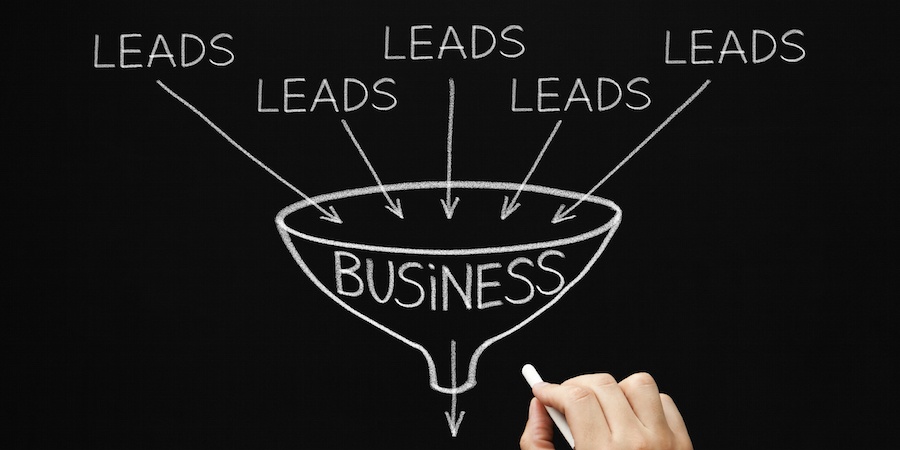


We all like things that make our jobs a bit easier, right? Well, what if I told you there's a way to automate some of the legwork necessary to get better quality lead lists, and that you can use specific criteria to help segment your lists into more manageable groups of prospects? You might think this sounds crazy, but it’s really quite simple with today's marketing technology.
With the power of marketing automation software, such as HubSpot, you can create auto-segmented lists and workflows that consist only of prospects that meet a certain set of predetermined criteria. You can have confidence that the individuals entering your list are high quality leads based on their lead scoring—which is determined using a combination of the contact form properties they've submitted and other factors that would indicate buyer readiness (e.g., number of conversions on your site, how they found your site, and so on).
By qualifying your leads and filtering them based on qualification, your list quality will improve, your data sets will be cleaner, and your KPI reporting will become more accurate. It's not always perfect and usually requires some trial and error behind the scenes, but once your lead filtering is defined, it should certainly help you identify your best leads more quickly.
With just a few clicks of a button, you can be on your way to a better lead qualifying process.
One of the most important things to do prior to delving into the platform is to start with a pen and paper and define exactly for your company what qualifies someone as a lead, MQL, and SQL. It’s critical to define these terms so that your entire organization is on the same page when defining your criteria, and you can also take this opportunity to check that everyone is speaking the same language in your company when referencing how to organize prospects. To help you out, here are some standard definitions of these terms:
Lead: an individual who has filled out a form with more than just an email address, often for some sort of content-based offer on your website
MQL (Marketing Qualified Lead): individuals who have identified themselves as more deeply engaged but not quite sales-ready
SQL (Sales Qualified Lead): individuals worthy of direct sales follow-up, ready and willing to receive outreach from your sales team
Evangelists: those that advocate for business and refer new unsolicited business to your company
Others: examples include wildcard lifecycle stage, lost opportunities, renewals, key accounts, competitors, etc.
Once you've defined what a lead, MQL, and SQL are, take a look in your HubSpot portal at your contact form fields and make sure that the contact properties listed can be used to segment prospects into lists. Think to yourself, "Will this form field help me identify and segment this contact?" and if not, try to think of some that can help you filter your leads. If you're using smart forms, make sure your form field progression allows you to uncover deeper insights on future downloads from repeat visitors. If they've filled out one of your forms before, smart forms will display new form fields to be filled out so they don't need to repeat the same information given previously. Regardless of whether you use smart forms or not, however, you need to make sure that your contacts are persuaded to convert, while also providing the information that's necessary to segment them appropriately and effectively.
After confirming that the necessary contact properties are in place and being used in your forms, the next step is to temporarily reset allof your contacts' lifecycle stages as subscribers rather than leads. This may sound extreme, but it gives a baseline for all contacts to be reset from and allows workflows to dictate which lifecycle stage the contact will enter—hence where the automation comes in. Once all contacts have been reset, you're then ready to create the progression that will organize those contacts into your MQL and SQL lists that are specific to the criteria you've already outlined.
Prior to developing workflows, you'll need to create the lists where these contacts will filter into (i.e., MQLs, SQLs, Unqualified Leads, etc.). You’ll do this by spelling out which contact properties are necessary for a contact to become part of a specific list (e.g., Marketing budget over $50,000 annually, located in Wisconsin, etc.) and creating that empty list in your portal.
Once you've created a list and defined its criteria, you'll need to create the coinciding workflows, which will place the contacts onto their respective list, as well as adjust the contact's lifecycle stage. This helps weed out the unwanted leads and isolate those of value. As contacts convert on future offers, your workflows will move these contacts into different lifecycle stages and lists.
While lead filtering isn't perfect, it's helpful in creating manageable and better quality lead lists. Though you'll still need to comb through lists to ensure that they're accurate, the lists that are created will help with upfront distinctions that qualify (or unqualify) leads—making your life much easier. If you run across a lead with an incorrect lifecycle stage, you have the ability to reassign to the correct stage without disrupting the progression. It's likely that your definition of MQL, SQL, and unwanted leads will evolve over time, but as your definitions develop, just make sure to update your list and workflows and your lead list will be just fine.
Topics: Marketing Automation
